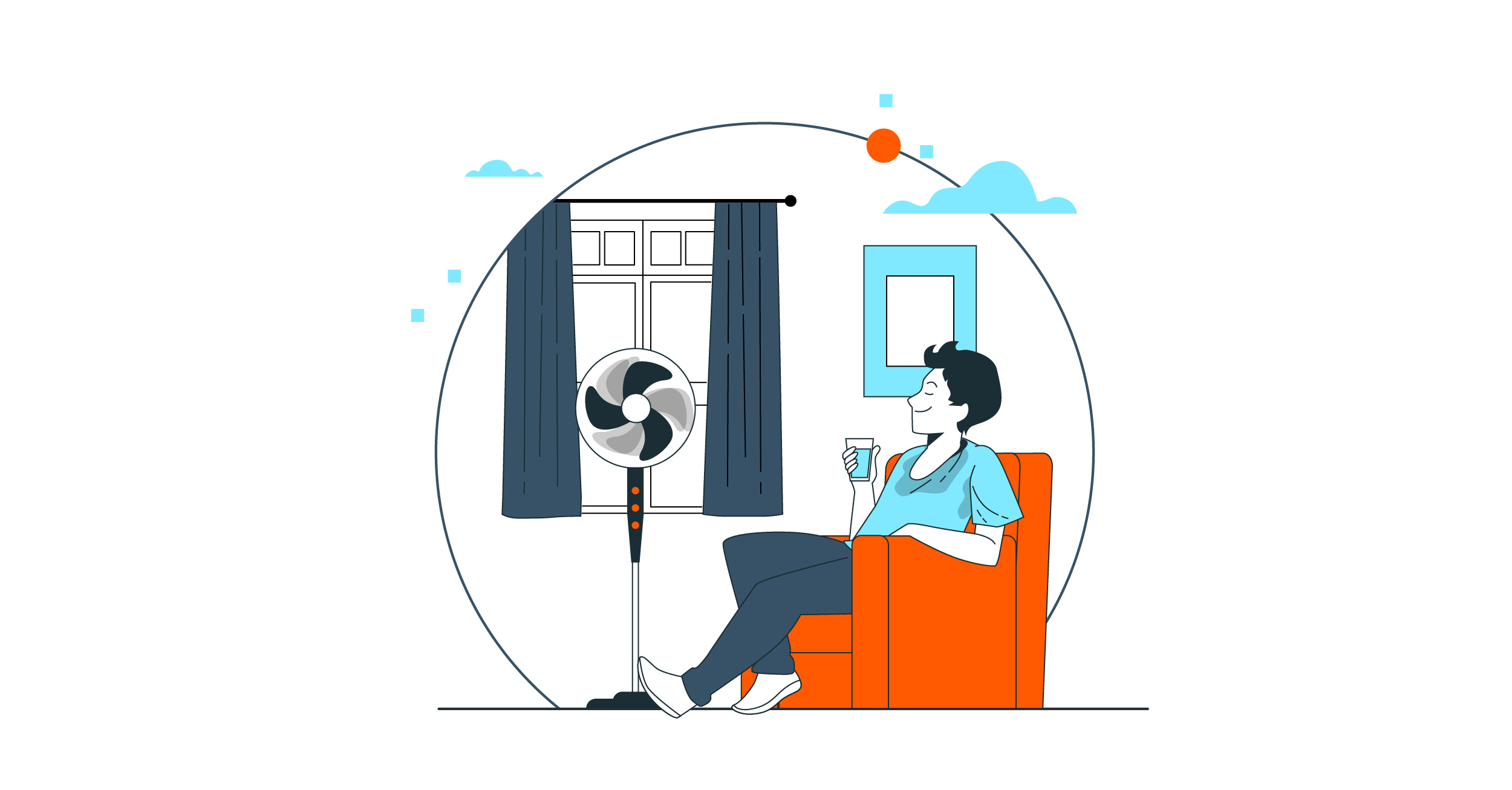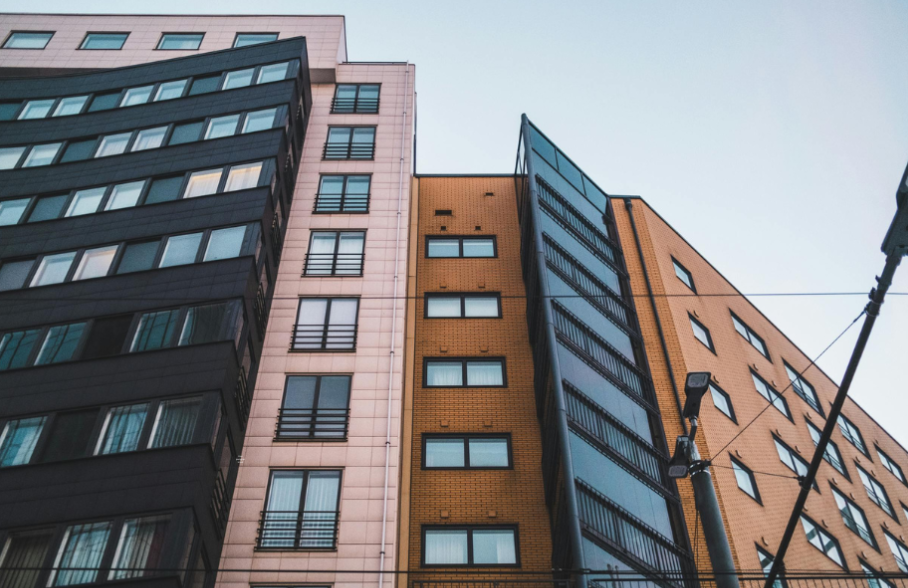
The UK is getting hotter. Met Office figures show that the number of days with temperatures 10 degrees above average quadrupled in the last 10 years, while the UK has become 8% sunnier in the same period.
The last three springs have been among the top five hottest on record. 2024 set a new record, but was immediately surpassed by 2025 with temperatures reaching 35°C.
This has enormous health implications, especially for children, vulnerable people and those over 65. Around 600 people are believed to have died due to the heatwave in June 2025 alone.
The fact is, most UK homes are designed to keep heat in during cold weather, not to let it out when it is hot.
One study found that the number of people complaining of uncomfortable warmth in their homes increased from 18% in 2011 to 80% in 2022.
Housing providers have a responsibility to ensure their properties don’t pose a danger to residents during heatwaves. They also need to ensure that the buildings themselves aren’t damaged by extreme heat.
This article explains the basics for landlords and the steps they can take to protect those living in their properties.
What Is Extreme Heat and What Impact Does It Have?
To understand how to deal with heat, you first need to understand what qualifies as extreme.
The UK Met Office generally issues health alerts when temperatures exceed 30 degrees during the day and 15 degrees during the night for at least two consecutive days.
It defines a heatwave as three consecutive days with temperatures exceeding 25 degrees (28 degrees in Greater London).
According to the World Health Organisation (WHO), the maximum acceptable temperature for a room is between 25 and 32 degrees, depending on the region.
In such conditions, heat is trapped in poorly insulated or unsuitably designed homes, causing temperatures to rise sharply and increasing the likelihood of residents suffering heat stroke and dehydration.
And this doesn’t just affect the health of residents. In extreme heat, roof tiles and external cladding can crack or warp, sealants can fail, and plastic components like window frames and fascias can deform and discolour due to UV and heat exposure.
This causes more problems, like water ingress and cold air getting in during the winter months, not to mention leaving your properties looking tatty.
Worst still, extreme wet and dry conditions can cause the ground under and around properties to move causing either subsidence or heave, damaging the properties.
What kinds of properties are affected by the heat?
Some properties are more susceptible to extreme heat than others. For example, because hot air rises, top-floor flats are likely to trap heat, while properties with a south or west facing aspect will be more exposed to the sun.
Homes that only have opening windows at one level or on one side will also struggle to create suitable airflow for cooling.
Extreme heat is predicted to become more common in the future, meaning the health impacts and risk to properties will increase. It’s therefore critical that landlords take a proactive approach to preparing their properties for the extreme temperatures of tomorrow.
In the next section, we list some of the ways they can do this.
11 Ways To Reduce The Impact of Extreme Heat on Properties
Cooling properties is all about creating shade and ensuring heat can escape and is kept out of the property. Here are 11 ways you can mitigate severe heat in your housing stock:
-
Install ways to cover windows
Adding blinds, curtains, or shutters to windows, especially those made of thermal or reflective materials, can significantly prevent solar gain.
External shutters or louvres work even better, especially on south and west facing elevations where the sun hits hardest.
-
Add heat control window film
Window film is a good retrofit for properties with large windows. It reflects solar radiation while still allowing natural light through. Some types can block up to 80% of solar energy, making them a subtle but effective way of preventing heat from building up.
-
Install ventilation
Ventilation plays a huge role during hot spells with trickle vents and extractor fans helping to reduce the feeling of warm air.
For a more advanced solution, mechanical ventilation with heat recovery MVHR systems pull in cooler fresh air from outside and push warm air out.
In tightly sealed properties, this kind of active air flow can make a noticeable difference to indoor heat levels.
-
Install ceiling fans
Ceiling fans don’t lower the room’s temperature, but they make it feel cooler by moving air. They’re far cheaper to run than air conditioning and ideal for bedrooms or lounges.
However, because they don’t really reduce the temperature, they must be installed with more effective cooling systems.
-
Use more modern light bulbs
Traditional bulbs produce heat, which is unhelpful in warm weather. Replacing old incandescent bulbs with LEDs is quick, reduces heat and saves energy.
-
Install double glazing
Double glazing helps stabilise indoor temperatures all year. In summer, it slows down the amount of the sun’s heat that passes through windows, while also keeping cooler indoor air from escaping.
If possible, opt for solar control glazing or low-emissivity coatings to reflect even more heat away.
-
Install wall, floor and ceiling insulation
Insulation doesn’t just keep homes warm, it also protects them from overheating. It works by slowing the transfer of heat, meaning the internal temperature increases more slowly during the day and so stays cool for longer.
This is particularly useful in top-floor flats or converted lofts, where heat tends to build up quickly.
If you add insulation, you’ll also need to ensure you have sufficient ventilation; otherwise, you risk trapping too much heat in.
-
Grow plants outside south-facing windows
Planting trees and tall shrubs so they shade windows is a natural way to cool a property. Deciduous trees are best, as they offer sun protection in summer and allow light to pass through in winter.
However, be careful not to plant too close to properties, as roots can damage foundations and cause heave. A quick rule of thumb is to ensure no vegetation is closer to the property than its height. In other words, a shrub that you expect to grow to 1 meter should be planted at least 1 meter away from your property.
-
Build eaves, awnings, balconies or pergolas
Architectural shading elements like eaves or awnings help block high summer sun while still letting in low winter sunlight. Adding a pergola or covered balcony also creates more usable outdoor space for residents, while limiting solar gain through large windows or patio doors.
10. Use light-coloured or reflective materials
Dark roofs and cladding absorb heat, increasing internal temperatures, particularly in homes with inadequate insulation. Simply painting surfaces a lighter colour or applying reflective coatings can make a real difference.
Reflective or “cool” roofing materials can reduce roof temperatures, thereby transferring less heat to the indoor spaces beneath.
11. Consider installing air conditioning
Air conditioning can be expensive to install, operate and maintain. It also has poor energy efficiency. But in some homes, especially those with vulnerable residents, it might be a viable option.
If you opt for this route, select an efficient split system that blows in chilled air while removing hot air, and ensure the home is already well-insulated and shaded. Otherwise, running costs will spike and cooling performance will suffer.
How Heat Can Damage Your Property
As mentioned earlier, extreme heat can cause physical damage to your property. Here are some of the ways it does that:
Cracked or warped cladding: Heat causes materials like uPVC and timber to expand and contract, leading to warping or cracking over time.
Roof tile damage: Prolonged sun exposure can crack or loosen roof tiles, especially on unshaded roofs.
Blown render or paint: High temperatures dry out render and cause paint to bubble, flake or peel, particularly on south-facing walls.
Warped window and door frames: Plastic and timber frames can swell or bend in extreme heat, leading to sticking or draughts.
Degraded sealant: Sealant around windows and doors may soften or shrink, allowing moisture or hot air to enter.
Crumbling mortar: Older mortar can dry and crack in hot weather, weakening its structure and allowing water in.
Subsidence on clay soils: Clay shrinks when dry, putting pressure on foundations and causing wall cracks or misaligned doors.
Buckled flooring: Excess heat and poor ventilation can cause wooden or laminate floors to lift or warp.
Cracks in plaster or paintwork: Heat dries surfaces too quickly, leading to cosmetic cracking indoors.
Degraded insulation: High loft temperatures can reduce the performance of older insulation, making overheating worse.
What Steps Should Landlords Take?
Dealing with the impact of increasingly hot weather in your properties is all about being proactive.
You need to assess your properties, check in on vulnerable residents and ensure your policies and processes are prepared to deal with future issues.
Here’s an overview of steps landlords can take:
-
Assess your housing stock
The best way to do this is to physically inspect your properties to decide how likely they are to overheat and what changes will mitigate this risk.
If you are unable to send inspectors to all of your properties, you can use your property information from a previous survey, if you have one.
Focus on properties with poor insulation and ventilation and plan preventative maintenance to make the relevant upgrades.
-
Check in on high-risk residents
It’s also worth carrying out welfare calls on homes with children, older people and vulnerable residents.
These groups are more likely to suffer from heat exhaustion, dry skin, heat cramps, or a similar heat-related illness.
Ask them how they are feeling in the heat and whether their home is getting too hot. Check the air temperature on hot days and provide advice on how they can cool the property down, as well as offering to install thermal cooling upgrades.
Resident checklist: How to protect your home from extreme heatHere’s a checklist you can give to each resident so they can keep their house cool in hot weather. ☀️ Close curtains and blinds to block direct sunlight: Keep out afternoon sun, especially on west‑facing windows, to reduce heat entering your home. ☀️ Open windows at cooler times: In the early morning or late evening, open windows on opposite sides to encourage cooler air flow through your home. ☀️ Use electric fans correctly: Position fans near open windows to draw in cooler air or push out warm air - this helps reduce body temperature. ☀️ Take a cool shower or use an ice pack: Having a cool shower or applying an ice pack to pulse points helps quickly reduce body temperature. ☀️ Stay hydrated: Drink plenty of water to replace fluids and help regulate your core temperature, especially on hot days and in high humidity. ☀️ Create ‘cool spaces’ in your home: Choose rooms shaded from afternoon sun - ideally with closed blinds, ventilation, and fans. ☀️ Protect your home with weather stripping: Seal gaps around doors/windows with weather stripping to keep warm air out and maintain a comfortable temperature. ☀️ Visit cooler public places: Consider heading to shopping centres, libraries, or other cool spaces with air conditioning to beat the heat sustainably. ☀️ Block heat gain with shade and reflective surfaces: Draw curtains, set up external shading, or use light-coloured curtains to reduce heat build-up. Reflective materials and weather stripping help keep the home cool year-round. |
-
Update your insurance policies
Good landlord insurance will help cover the cost of damage caused by extreme heat. But it’s worth reviewing your policy to ensure you are covered.
Many insurers cover structural damage caused by extreme weather, but may classify heat damage under "subsidence" or "weather-related perils," while others may exclude it altogether.
If you find that you are not adequately covered, ask to adjust your policy or find another insurer.
-
Make repairs and maintenance efficient
As temperatures rise, you can expect to receive more repair requests and complaints about heat from residents.
These requests should be treated seriously. It’s essential not just to repair the damage to homes but also to ensure they can withstand the heat in the future.
The most effective way to achieve this is by using a digital platform like EVO to manage your repairs.
EVO allows housing providers to outsource all repairs and maintenance to a digital platform. It uses a combination of modern technology and automation to ensure repairs are carried out efficiently and to a high standard.
This ensures that any heat-related issues are dealt with promptly, keeping residents happy, healthy and safe and ensuring your properties remain in good condition.
Here’s a summary of how it works:
✔️ Residents use the EVO Living app to report repairs or maintenance problems directly.
✔️ EVO’s system instantly matches the job to a verified local contractor based on trade, location, and availability.
✔️ Residents choose a convenient timeslot. They can track the progress of their repair using their app.
✔️ Contractors complete the work and upload photos, notes, and completion details straight to the system.
✔️ Housing providers can monitor progress, costs, and timelines through a live dashboard, with no need to chase.
✔️ All jobs are logged, helping landlords identify recurring issues, track performance, and plan future upgrades, like heat-resilience works.
Prepare for Future Heat Waves With EVO
The climate is changing, and UK homes must be adapted to it. Rising temperatures pose serious risks to residents’ health and the long-term condition of your properties.
From overheating and subsidence to increased repair demands, housing providers must be ready to act.
That means taking steps now: Identifying vulnerable homes, upgrading insulation and ventilation, supporting residents, and making sure your processes are ready for what’s ahead.
If you’re looking for a faster, more efficient way to manage maintenance and prepare your stock for extreme heat, EVO can help.
Contact us to learn how our platform can support you.
PHOTO BY EVO


